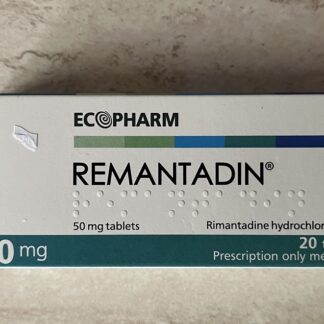Description
INGREDIENTS :
Active substance – Mycobasterium bovis BCG 11.25 mg /37.5 mg semi-dry bacterial mass/
1.0 – 3.0 x 10 8 viable units
Excipients:
sodium glutamate
40 mg
INDICATIONS:
Intravesical:
– for the prevention of the recurrence of superficial bladder tumors after transurethral resection;
– for the treatment of carcinoma “in situ”
Transdermal :
– for the treatment of malignant melanoma
– for non-specific immunomodulatory therapy in other malignant neoplasms
CONTRAINDICATIONS:
Calgevax is not used in the following cases:
– in patients with immune suppression;
– in persons with congenital or acquired immunodeficiency due to disease or antitumor therapy;
– in HIV – seropositive persons and in patients receiving steroids in immunosuppressive doses or other immunosuppressive agents;
– in febrile conditions;
– with urinary tract infections or massive hematuria, as well as with parallel antimicrobial therapy;
– in active tuberculosis, the positive tuberculosis Mantoux test is a contraindication only in case of proven active tuberculosis infection;
– current or previous systemic BCG reaction
SPECIAL WARNINGS:
The use of Calgevax in children is not recommended due to the lack of sufficient data on the safety and efficacy of the product in children.
The risk/benefit ratio is carefully evaluated when the medicinal product is to be administered during pregnancy and lactation, due to the lack of clinical data for use in these cases. It is known that a lactating woman with systemic BCG infection can infect her child.
EFFECT ON THE ABILITY TO DRIVE AND OPERATE MACHINERY
There are no studies on the effects of Kalgevax on the ability to drive and operate machinery
DOSAGE AND METHOD OF ADMINISTRATION:
Intravesical administration:
CALGEVAX is administered no earlier than 14 days after biopsy, transurethral resection or traumatic bladder catheterization. It is performed under the strict use of aseptic technique and under the supervision of a specialist. Three or four ampoules of the product are used for each intravesical infusion at the discretion of the attending urologist. The contents of the ampoule are dissolved in 1 ml of sterile physiological solution, gently shaken and waited until a homogeneous suspension is obtained. The mixture is withdrawn with a syringe and returned to the ampoule three times to ensure good mixing, which reduces the formation of clusters of mycobacteria. The suspended product is diluted in 50 ml of sterile physiological solution.
It is administered intravesically using a catheter.
The product remains in the bladder for two hours. During the first hour, every 15 minutes the patient assumes one of the following four supine positions: half-left rotation, half-right rotation, left side, right side.
The activity of Kalgevax is significantly reduced by light, so it should be avoided from exposure to daylight both before and after preparing the suspension. The suspended product is used immediately. The standard regimen involves one intravesical infusion per week for six weeks. Maintenance therapy is determined individually in each case.
The following doses can be used: monthly application for a minimum of 6-12 months or three weekly infusions at 3, 6, 12, 18, 24, 30 and 36 months from the date of the first infusion.
TRANSDERMAL APPLICATION AFTER SCARIFICATION OF THE SKIN:
On a surface of 5/5 cm, 10 horizontal and 10 vertical lines are made by means of an injection needle. In scarification, only the epidermis should be torn without profuse bleeding.
A multipuncture device can also be used and the depth of scarification adjusted.
0.5 ml of a suspension prepared as follows is applied to the scarification site: 0.5 ml of sterile physiological solution is added to the contents of one ampoule, resulting in a concentration of 75 mg/ml. One ampoule is used for one scarification. Cleaning the site before scarification should be done with acetone, waiting for its complete evaporation. For each subsequent scarification, a new place on the skin is selected. The frequency and duration of administration are determined by the attending physician.
UNWANTED REACTIONS:
Intravesical administration:
Local reactions – transient dysuria, pollakiuria, hematuria, bacterial infection of the urinary tract, granulomatous prostatitis, epididymitis, orchitis.
General – fatigue, fever, chills, sweating, nausea, vomiting, headache, muscle pain, abdominal colitis, liver toxicity, uveitis, vitiligo, arthritis, leukopenia, splenomegaly.
Adverse reactions during intravesical administration appear 3-4 hours after intravesical infusion and are transient – lasting 24-72 hours.
Transdermal application:
Local – localized itching or rash, painful ulcer at the site of application, regional adenopathy.
General – fatigue, fever, chills, sweating, nausea, vomiting, headache, muscle pain, abdominal colic, diffuse rash, liver toxicity, erythema nodosum, conjunctivitis, uveitis, arthritis, leukopenia, splenomegaly.
In case of severe general side effects, the intervals between individual administrations are extended, and Calgevax treatment can be discontinued at the discretion of the attending physician.



